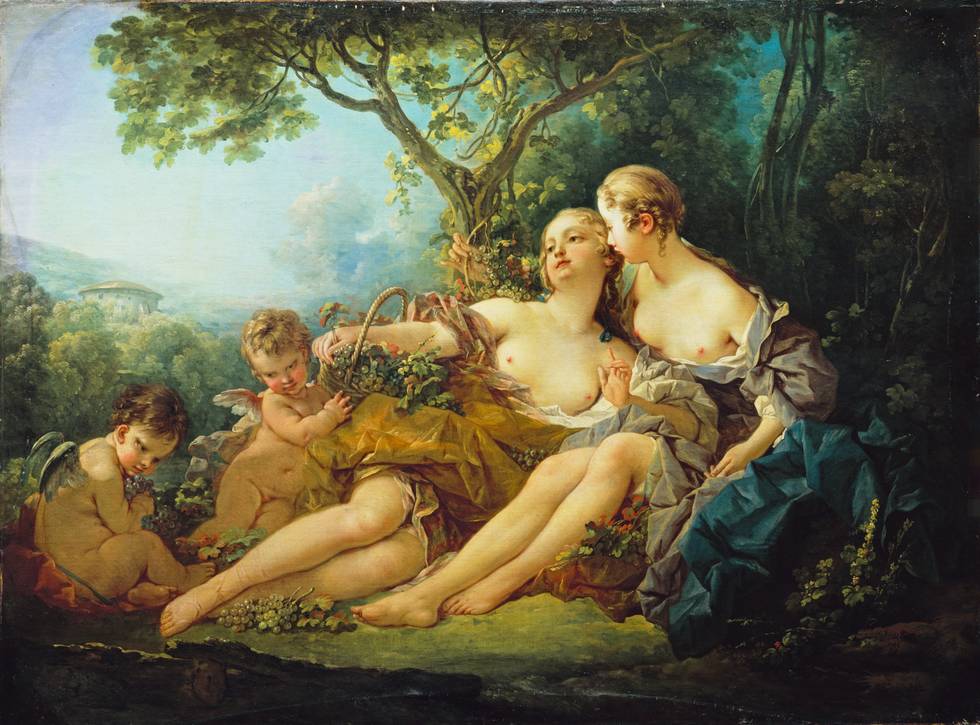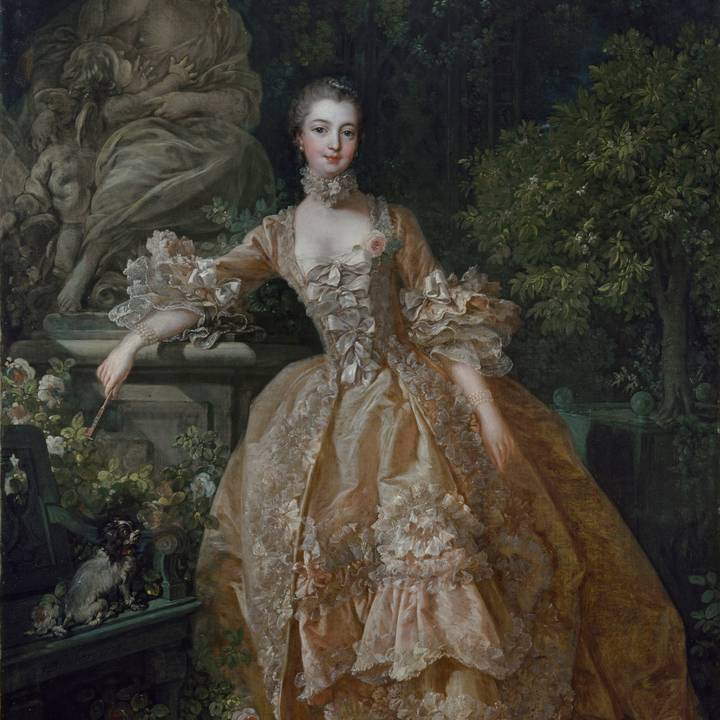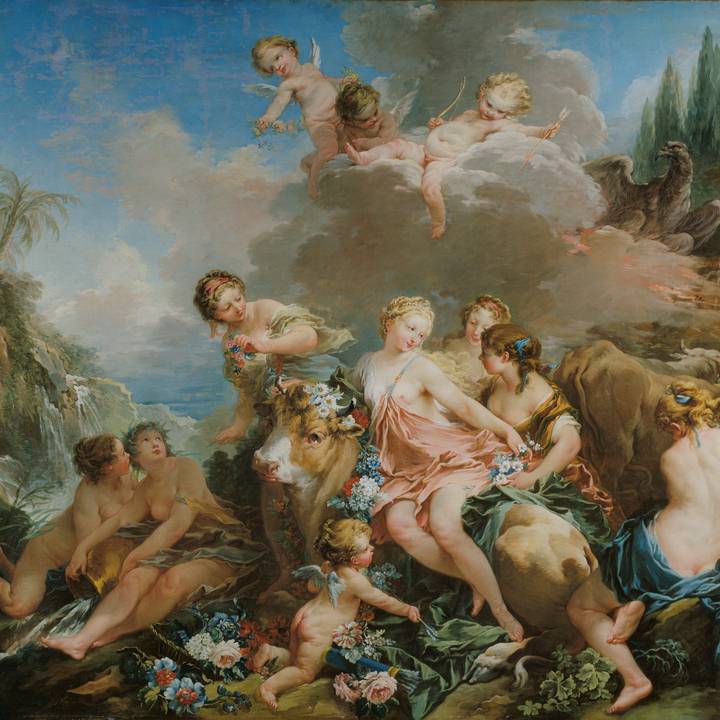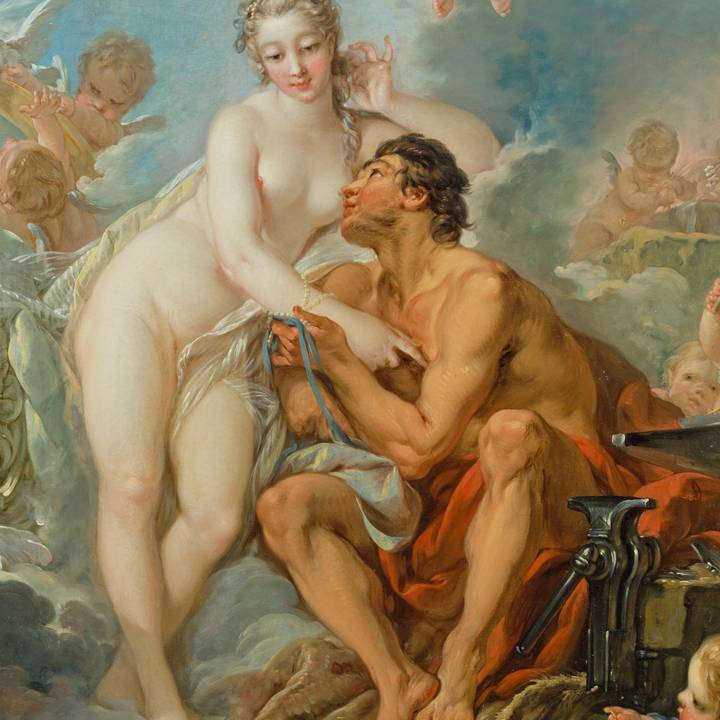Date: 1745
Materials: Oil on canvas
Measurements: 99 x 134.5 cm
Inv. Nos: P447
Originally the painting, together with Pastoral Make-Up, formed part of a set of four representing the Seasons, all of which were shaped in the same manner and engraved by Charles Duflos in 1751.
Autumn is represented by an Ovidian tale of seduction; that of the Nymph Erigone, here represented as an Arcadian shepherdess.
The subject of Erigone is taken from Ovid’s Metamorphoses, in which Bacchus deceived the nymph Erigone by transforming himself into a grape which she ate. Erigone was the daughter of Icarius of Athens, to whom Dionysus, by deceiving Erigone, gave the gift of wine.

Icarius shared it with shepherds, who, confused by the effects of the alcohol and believing they had been poisoned, killed him. Inconsolable discovering her father's lifeless body, Erigone took her own life. As a result of her sorrow, she was immortalised in the stars as the constellation Virgo.
In François Boucher's depiction the artwork offers a romanticised view of her life before these tragic events unfolded.
Instead of highlighting the sorrowful aspects of Erigone's narrative, Boucher's interpretation likely accentuates the serene and idyllic moments of her existence, linking her to the beauty and tranquility of nature—a common motif in Rococo art.
The serene pastoral landscape, rich with a sense of calm, evokes an atmosphere untouched by modern complications.
This approach aligns with Boucher’s practice of portraying mythological figures in ways that resonate with the escapist desires of the French aristocracy, who longed for the simplicity and purity found in rural life.
In this context, the cherubs may symbolise divine influences in Erigone's life, potentially referencing Dionysus.
The abundance of vines and grapes directly alludes to Dionysus and the wine that inadvertently led to her father's demise.
Boucher's artwork frequently features such mythological themes; however, rather than presenting them with a somber tone, he celebrates their presence within a realm of beauty and sensuality.
Viewed through the lens of Erigone's story, the painting serves as a poignant reminder of the transient nature of joy and the ever-present force of fate in Greek mythology. And with its erotic overtones, the subject certainly would have appealed to eighteenth-century taste.



